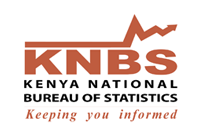- Consumer Price Index (CPI) rose from 139.87 points in July 2013 to 140.29 points in August 2013 while the overall rate of inflation increased from 6.02 per cent to 6.67 per cent during the same period. The Kenyan Shilling depreciated against all major international currencies except the South African rand. The Kenyan shilling exchanged at an average of KSh 87.49, KSh 135.47, KSh 116.51, KSh 89.39, KSh 8.69, KSh 29.48 and KSh 18.50 against the US dollar, sterling pound, Euro, Japanese Yen, South African rand, the Ugandan and Tanzanian shilling respectively, as at the end of August 2013.
- The average yield rate for the 91-day Treasury bills, which is a benchmark for the general trend of interest rates, increased from 5.92 per cent in July 2013 to 10.03 in August 2013. The inter-bank rates rose from 7.99 per cent to 8.96 per cent during the period. The Nairobi Securities Exchange share index (NSE 20) dropped by 1.87 per cent from 4,788 points in July 2013 to 4,698 points in August 2013, while the total number of shares traded increased from 616 to 670 million shares during the same period.
- The total value of NSE shares traded went up from KSh 11.2 billion to KSh 20.8 billion. Broad money supply (M3), a key indicator for monetary policy formulation, increased from KSh 1,835.5 billion in July 2013 to 1,849.7 billion in August 2013. Money and Quasi-money (M2) expanded from KSh 1,553.7 billion to KSh 1,575.2 billion over the same period. Gross Foreign Exchange Reserves deflated from KSh 703,803 Million in July to KSh 684,659 Million in August 2013. Net Foreign Exchange Reserves decreased to KSh 378.8 billion over the same period. Download..
